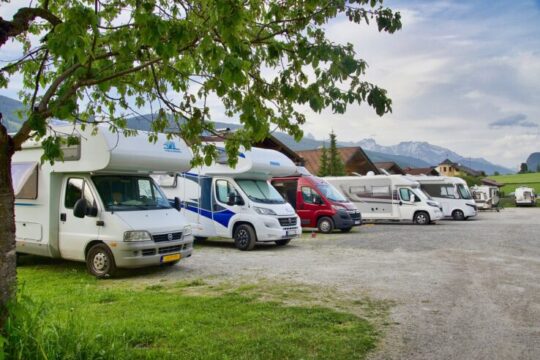The RV rental industry experiences fluctuations in demand throughout the year, with high and low seasons presenting unique challenges and opportunities. To optimize profitability, it is crucial for RV rental businesses to employ specific pricing strategies tailored to each season. In this article, we will explore targeted pricing strategies for high and low seasons to help you make the most of these periods.
High Season Pricing Strategies: During high seasons (read about the July 4th RV rental experience), when demand for RV rentals is at its peak, it’s important to maximize revenue without discouraging potential customers. Here are some effective strategies to consider:
- Peak Pricing: Implement a tiered pricing structure where rates are higher during peak periods, such as summer months or renting RVs for major holidays. Capitalize on increased demand by charging a premium for peak season rentals.
- Minimum Rental Periods: Set minimum rental periods during high seasons to ensure longer bookings and reduce the number of short-term rentals. This strategy helps optimize revenue by avoiding gaps between rentals.
- Early Booking Discounts: Encourage customers to book in advance by offering early bird discounts. By incentivizing early reservations, you can secure bookings and create a sense of urgency among customers.
- Premium Services and Add-ons: Offer additional services or add-ons, such as Wi-Fi, camping gear, or concierge services, at an extra cost. By providing value-added services, you can increase revenue per rental and differentiate your offerings.
Low Season Pricing Strategies: During low seasons, when demand for RV rentals may decline, it’s essential to attract customers and maintain a steady stream of bookings. Consider the following strategies:
- Off-Peak Discounts: Offer discounted rates during off-peak periods to entice customers who are flexible with their travel plans. Lower prices can incentivize bookings and increase occupancy rates during slower periods.
- Long-Term Rental Deals: Encourage longer bookings by providing discounts for extended rental periods, such as weekly or monthly rates. This strategy can appeal to customers planning extended vacations or temporary housing solutions.
- Special Packages: Create themed packages or targeted promotions for specific customer segments during low seasons. For example, offer discounted rates for snowbird travelers seeking warmer climates during winter months.
- Collaborations and Partnerships: Collaborate with local tourism boards, travel agencies, or complementary businesses to create joint promotions or bundled offerings. Partnering with other businesses can expand your customer reach and attract new bookings.
By implementing RV pricing strategies for high and low seasons, RV rental businesses can optimize revenue and customer satisfaction throughout the year. Remember to conduct market research, create an RV business budget, and analyze customer preferences to develop effective pricing models. Continuously monitor and adjust your pricing strategies based on market conditions and customer feedback to stay competitive and maximize profitability in both high and low seasons.

